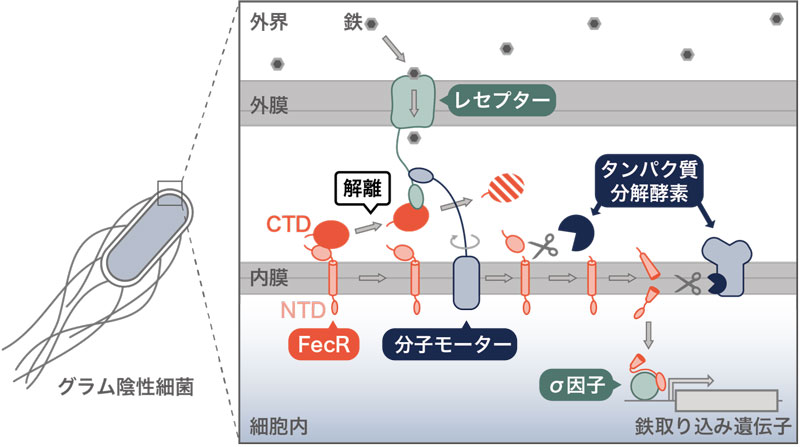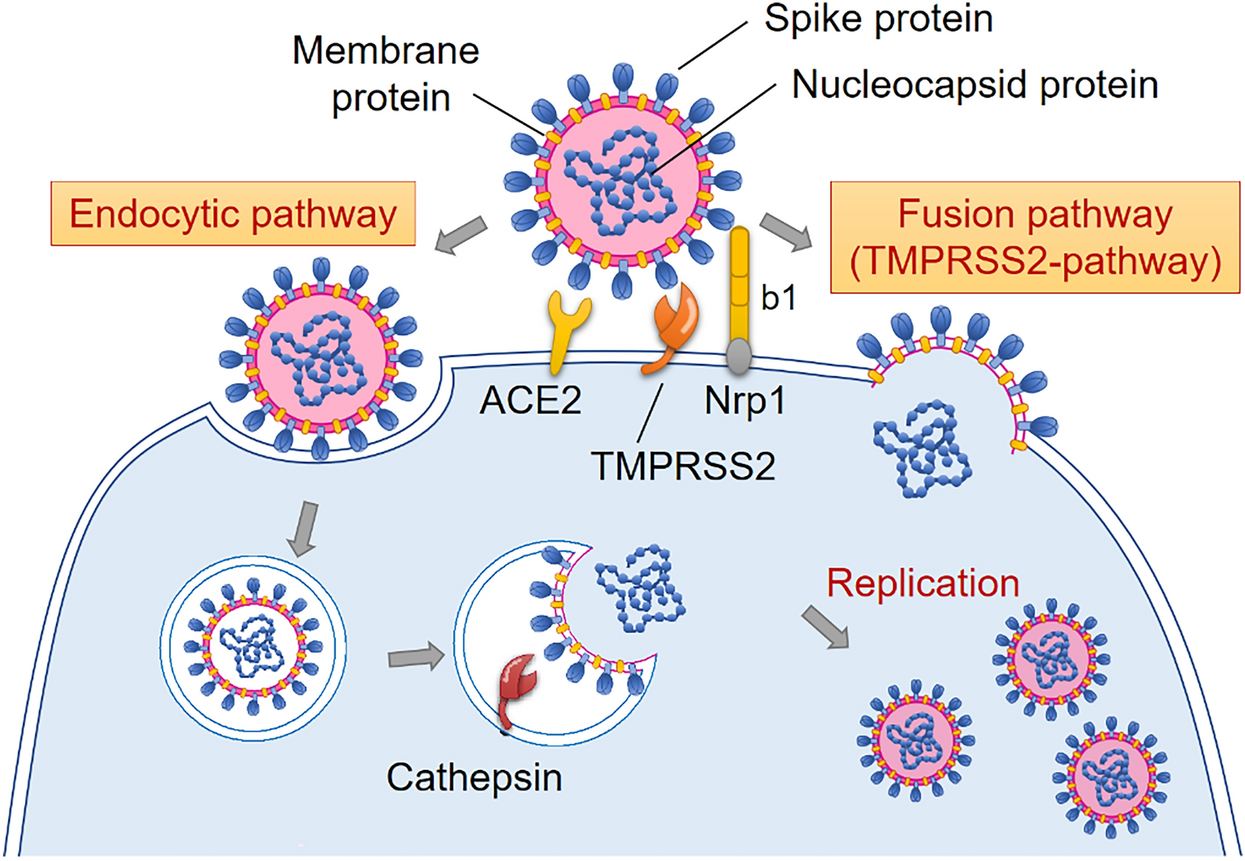2025-04-18 京都大学

グラム陰性細菌が外界の鉄を感知する機構
<関連情報>
- https://www.kyoto-u.ac.jp/ja/research-news/2025-04-18-2
- https://www.kyoto-u.ac.jp/sites/default/files/2025-04/web_2504_Akiyama-708fd682bd8aa9d7eeacc264ccc2244b.pdf
- https://www.pnas.org/doi/10.1073/pnas.2500366122
シグマ制御因子FecRの切断カスケードがTonB依存性シグナル伝達を制御する Cleavage cascade of the sigma regulator FecR orchestrates TonB-dependent signal transduction
Tatsuhiko Yokoyama, Ryoji Miyazaki, Takehiro Suzuki, +4, and Yoshinori Akiyama
Proceedings of the National Academy of Sciences Published:April 17, 2025
DOI:https://doi.org/10.1073/pnas.2500366122
Significance
Scarcity of iron, an essential element for life, has driven bacteria to evolve intricate acquisition systems, yet the molecular basis of their signal transduction mechanisms remains elusive. Unlike conventional pathways, iron transport systems employ outer membrane receptors that mediate signal transduction across both the outer and cytoplasmic membranes, powered by TonB. Using the Escherichia coli Fec system, we uncovered the mechanism by which FecR’s cleavage cascade orchestrates ferric citrate signaling through TonB-mediated energy transfer. These findings shed light on similar mechanisms in gram-negative bacteria and have significant implications for understanding bacterial adaptation and pathogenesis.
Abstract
TonB-dependent signal transduction is a versatile mechanism observed in gram-negative bacteria that integrates energy-dependent substrate transport with signal relay. In Escherichia coli, the TonB–ExbBD motor complex energizes the TonB-dependent outer membrane transporter FecA, facilitating ferric citrate import. FecA also acts as a sensor, transmitting signals to the cytoplasmic membrane protein FecR, which eventually activates the cytoplasmic sigma factor FecI, driving transcription of the fec operon. Building on our previous finding that FecR undergoes functional maturation through a three-step cleavage process [T. Yokoyama et al., J. Biol. Chem. 296, 100673 (2021)], we here describe the complete mechanism of FecR-mediated ferric citrate signaling involving FecA and TonB. The cleavage cascade begins with FecR autoproteolysis prior to membrane integration. The soluble C-terminal domain (CTD) fragment of FecR is cotranslocated with the N-terminal domain (NTD) fragment through a twin-arginine translocation (Tat) system–mediated process. In the periplasm, the interaction between the CTD and NTD fragments prevents further cleavage. Binding of ferric citrate induces a conformational change in FecA, exposing its TonB box to the periplasmic space. This structural alteration is transmitted to the interacting FecR CTD via the motor function of TonB, resulting in the release of the CTD blockage from the NTD. Consequently, the successive cleavage of FecR’s NTD is initiated, culminating in the ferric citrate signal–induced activation of fec gene expression. Our findings reveal that the regulation of FecR cleavage, controlled by the TonB–FecA axis, plays a central role in the bacterial response to ferric citrate signals.


